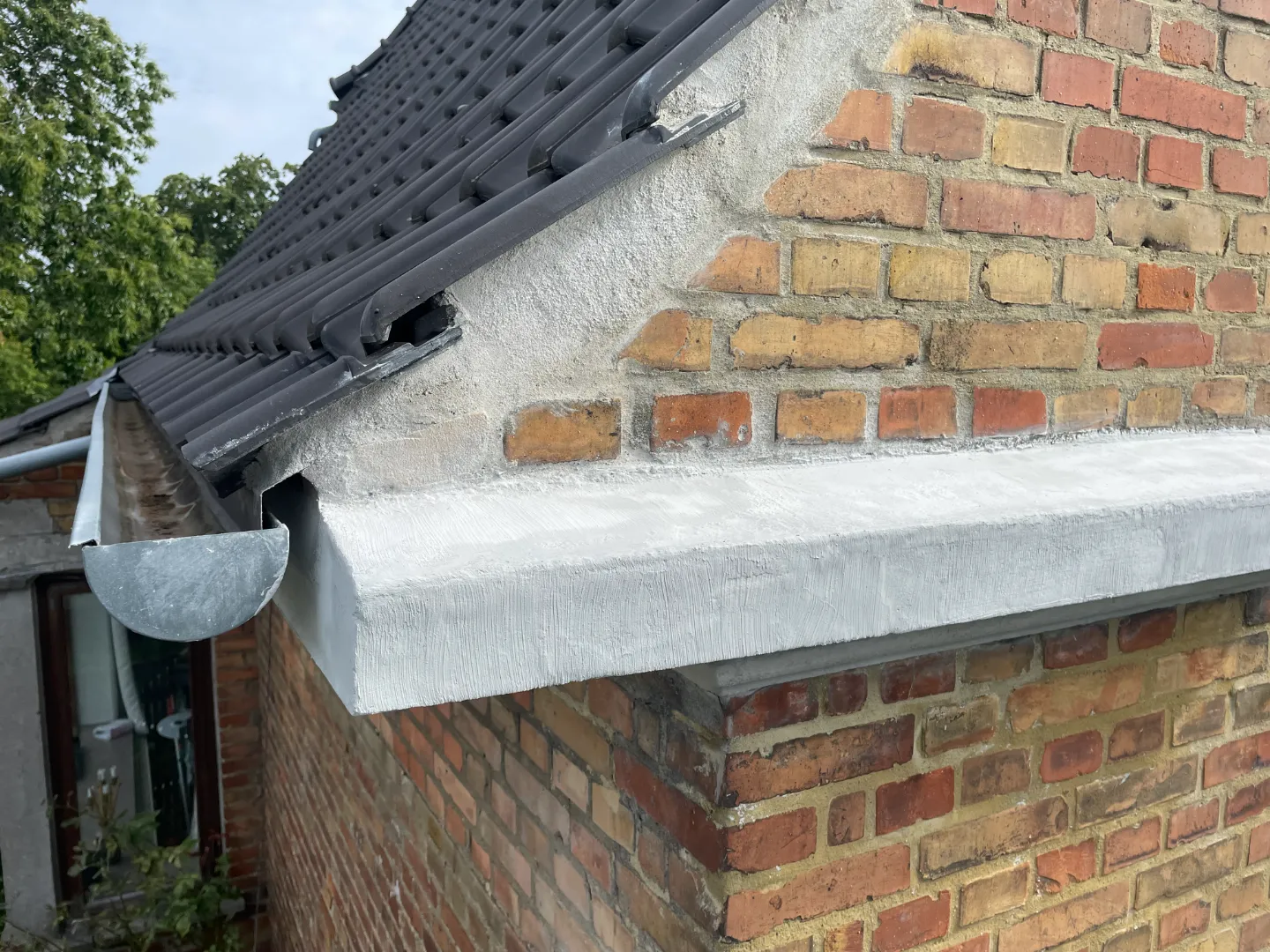Renovating cornices
On my house build in 1923 we have concrete cornices. Over time, however, these ornate elements can deteriorate due to weathering, structural issues, or simple wear and tear. Renovating concrete cornices is a crucial aspect of preserving the historical and aesthetic value of a building.
As the picture show the corner is heavily deteriorated.
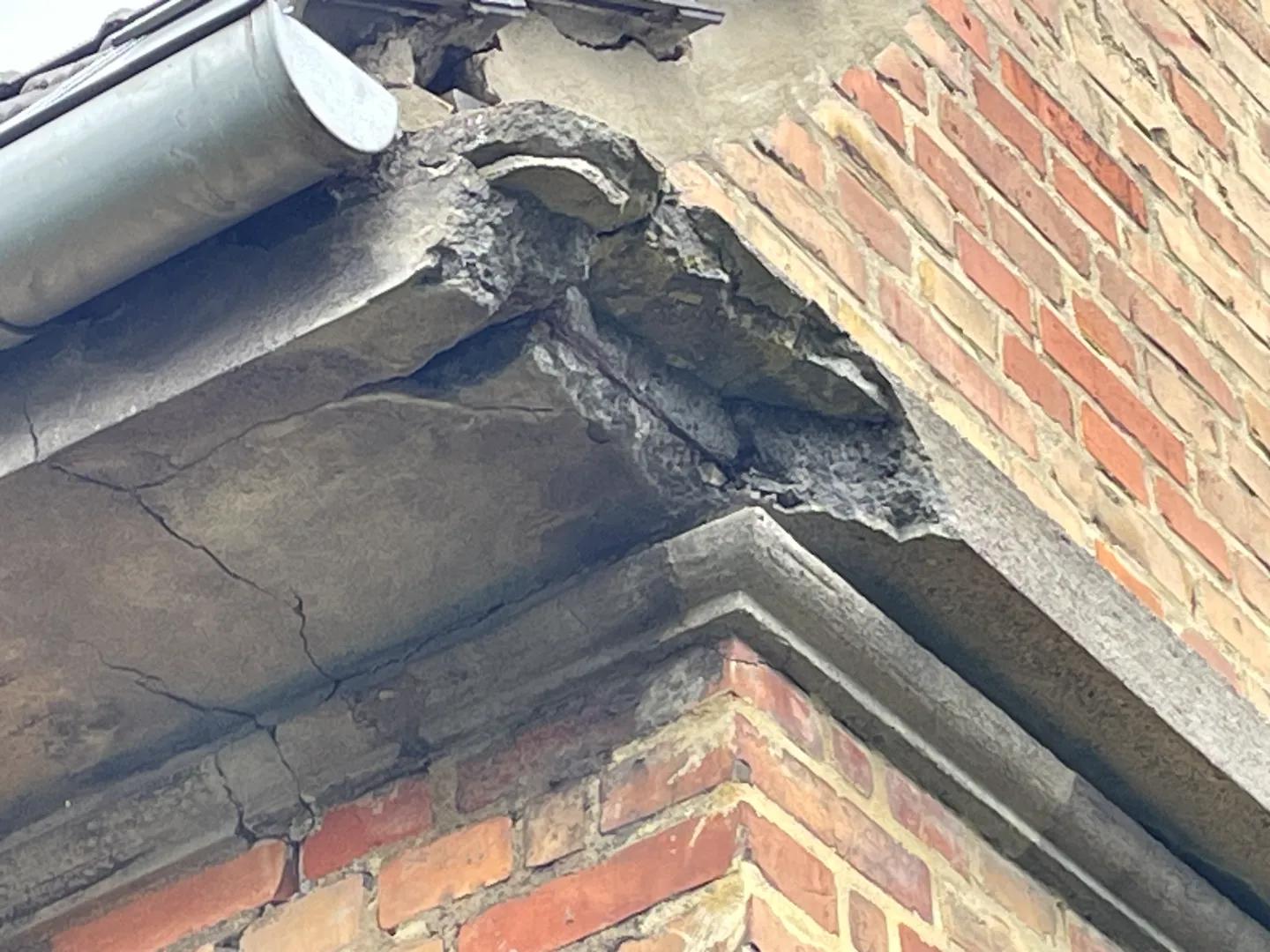
Some common problems include:
Cracks and Spalling: Exposure to weather elements, freeze-thaw cycles, and environmental pollutants can cause concrete to crack and spall, leading to a deteriorated appearance.
Metal Corrosion: Many older buildings feature metal reinforcements within the concrete. Corrosion of these metal elements can cause the concrete to crack and weaken.
Structural Instability: Over time, the supporting structures of cornices may weaken, leading to an increased risk of collapse. This poses a significant threat to both the building and its occupants.
The process
First I removed dirt, debris, and most loose elements from the cornice corner. I actually left a big chunk overhanging the brick wall, the plan was to fixate it to the rest of the structure. I supported the loose part with a telescopic drywall support to hold it in place.
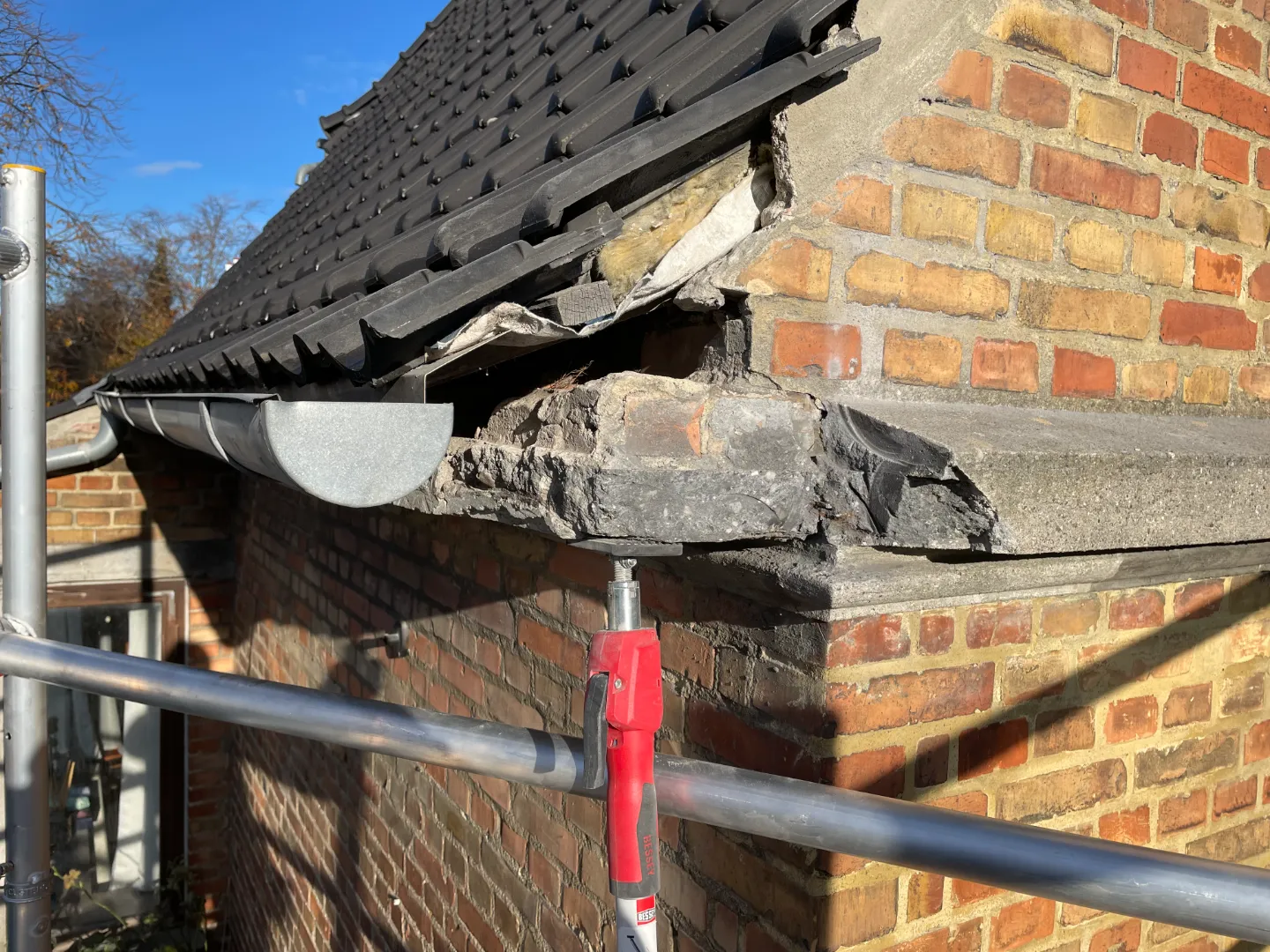
.. i forgot to take a picture og the metal reinforcement but here’s one from another part og the project. The bars should go into all parts of the existing structure and be fixated with something like epoxy acrylate anchor glue.
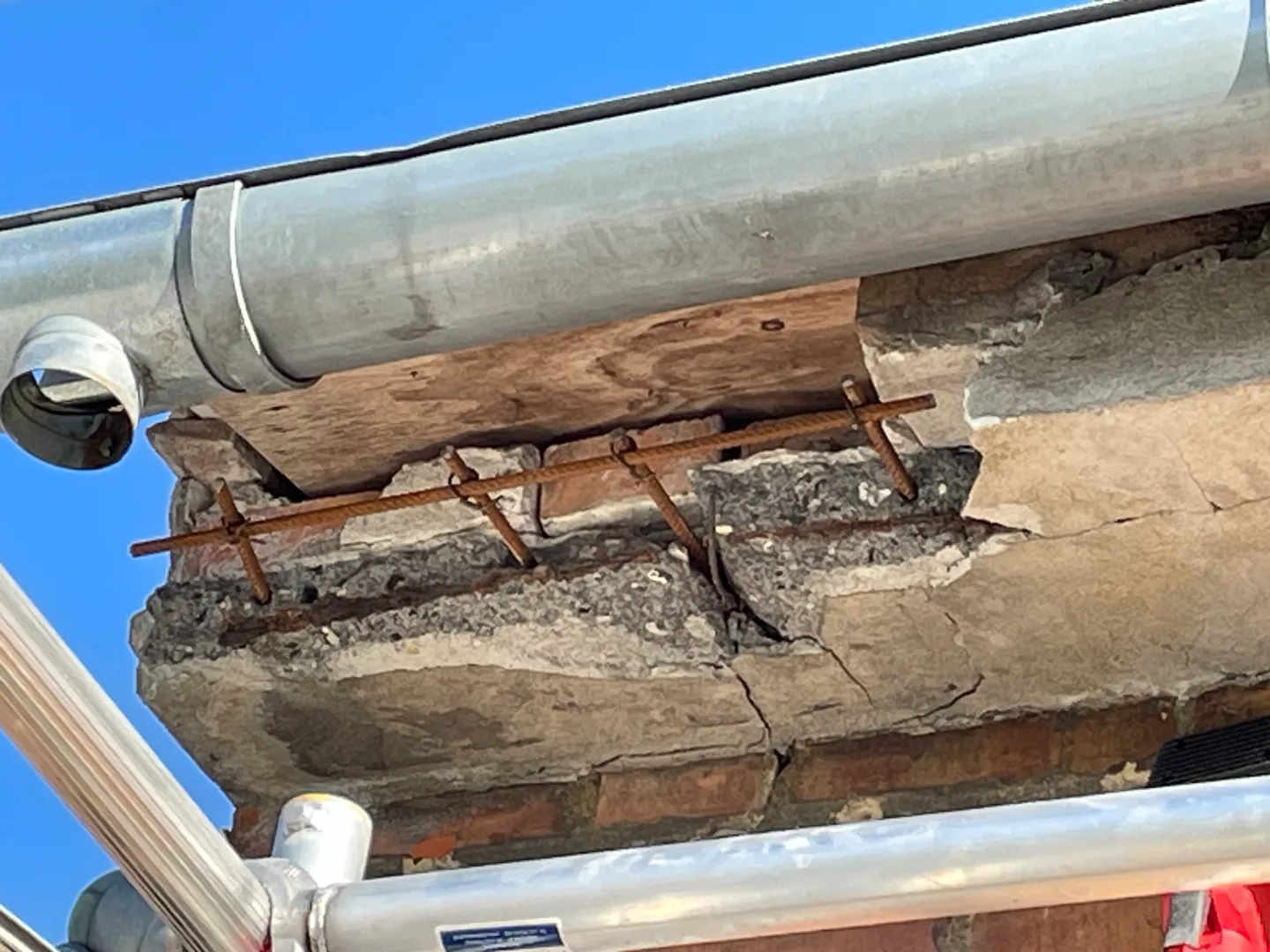
Next I build a mold for the bottom part of the cornice and supported it with a couple of telescopic drywall supports.The mold is 6 cm high.
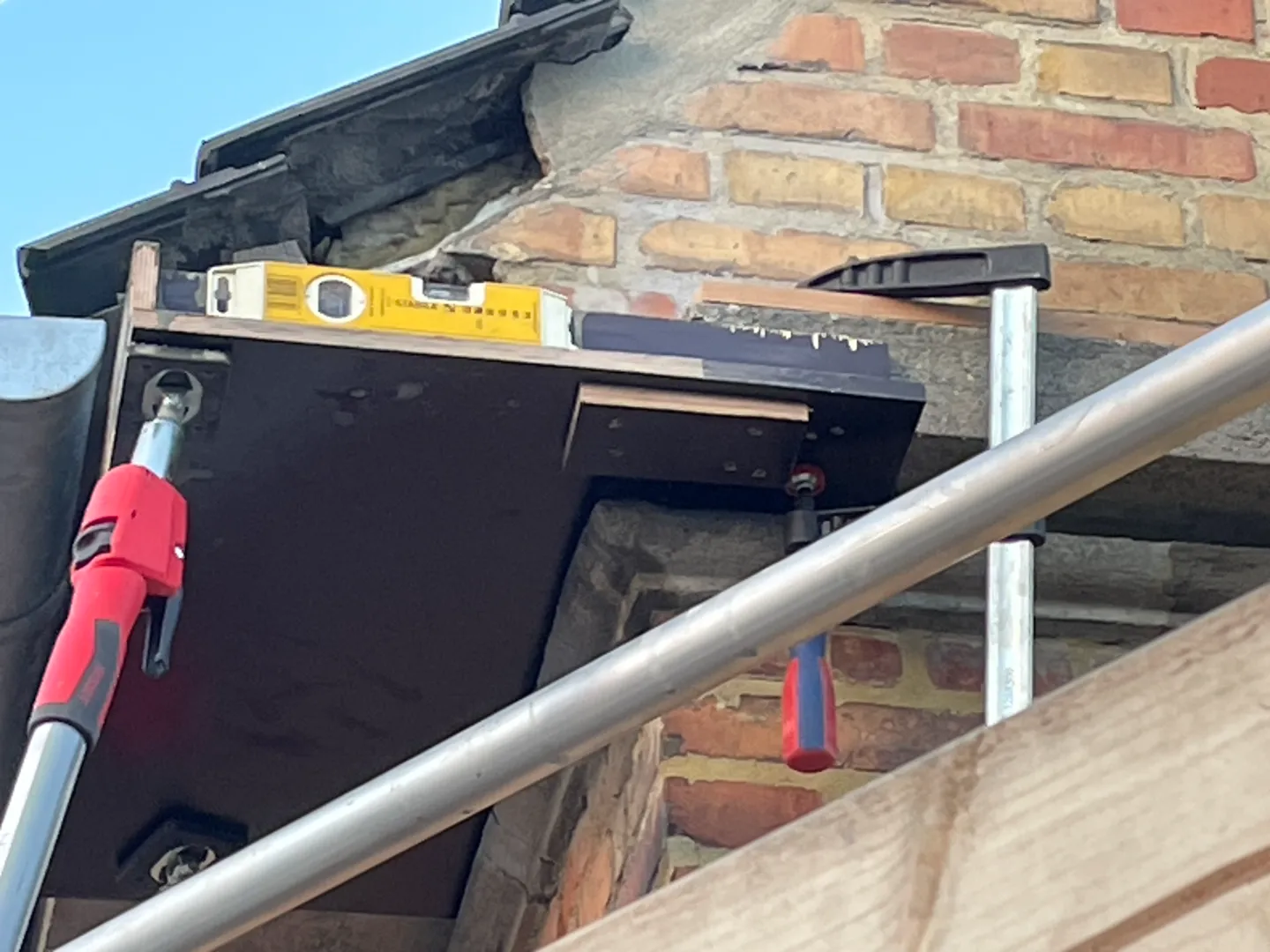
I then poured the concrete …
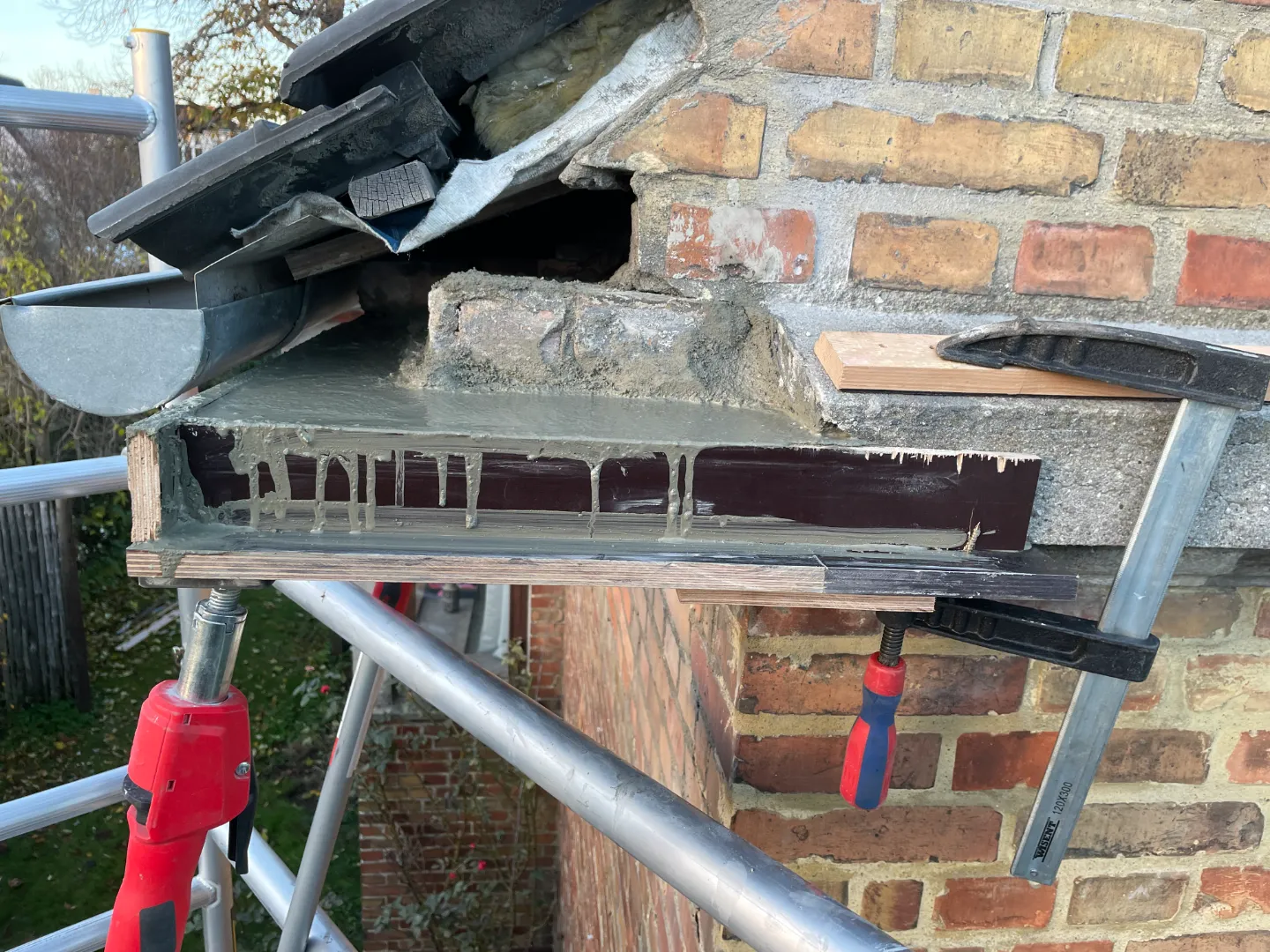
The base plate ended up like this:
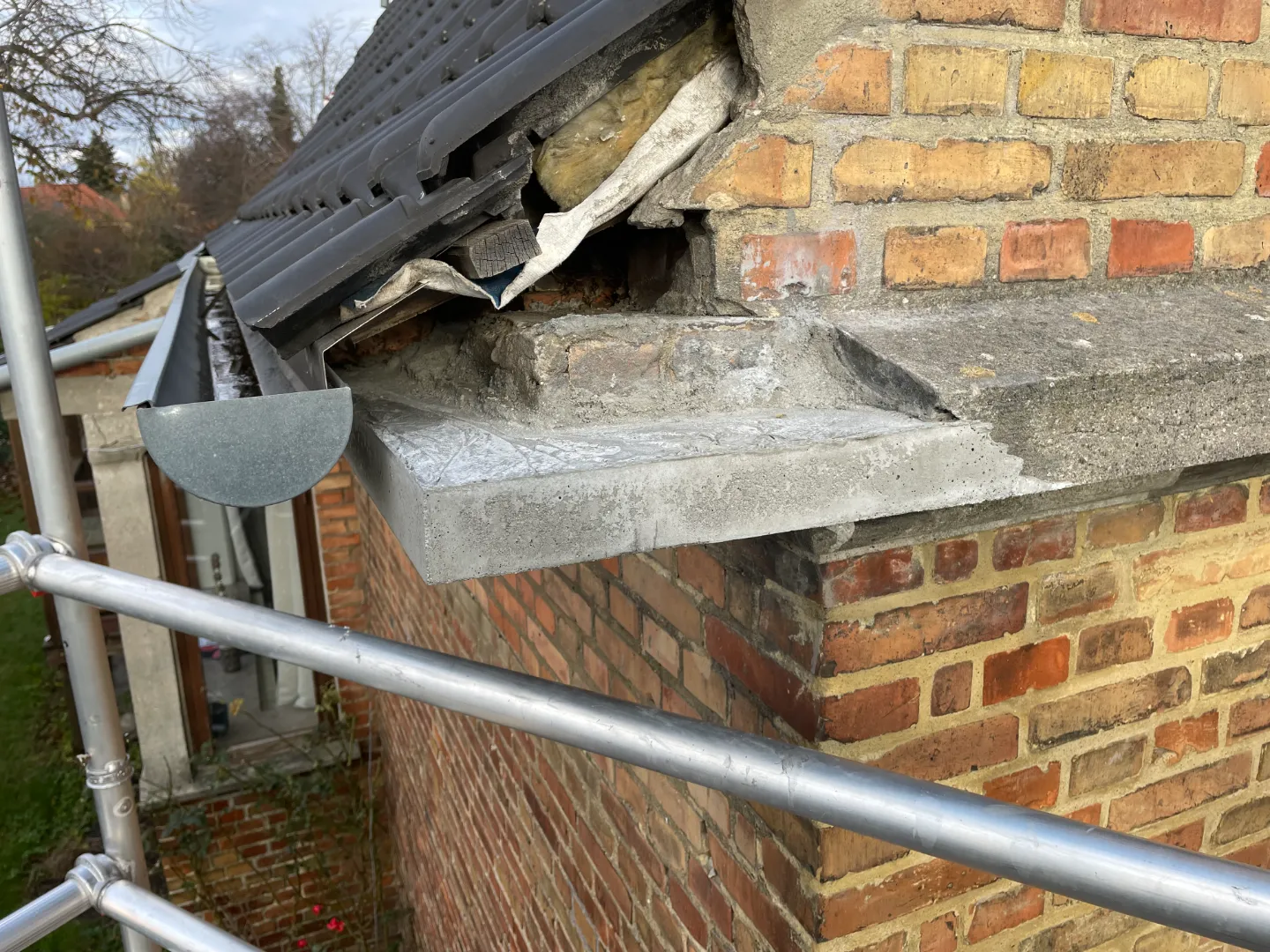
Then I made a form for the top part and filled it with concrete. I also forgot to take a picture of this step..
Last step was to put back the stones and fill the gap to the roof tiles with mortar. The Cornice is painted with Skalcem 100 a durable, cement based paint for mineral surfaces.
